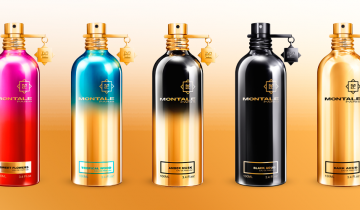Sillage, often described as the enchanting scent trail left by someone wearing perfume, is artificial and distinct from the natural pheromones produced by the body. This fragrance trail is most potent immediately after applying perfume and gradually diminishes over time. Understanding sillage is crucial because it is the primary reason people wear perfume.

Origins of Sillage or the “Fragrance Trail”:
The term “sillage,” derived from the French word for “wake” or “trail,” has gained popularity in recent years in the American context. Pronounced “see-yazh,” it is frequently used in fashion publications to compare and contrast various fragrance types. Sillage can describe the projection of scent for both perfumes and colognes.
Perfume Vocabulary and Other Fragrance Terms:
To choose the right fragrance, it’s essential to grasp the terminology associated with perfumes. Here are several common fragrance terms used by perfumers:
1. Note:
Notes represent the different scents emitted by a perfume. Each fragrance comprises three types of notes: head (or top notes), heart (middle) notes, and base notes.
- Head notes are the initial, most intense scents of a perfume, lasting about 5 to 10 minutes.
- Heart notes are richer, softer versions of the head notes, lingering for roughly 20 minutes to an hour.
- Base notes, the main body of a fragrance’s scent, emerge once the perfume sets and can last for 24 hours or more.
2. Tone:
Tones are the accents or flavors within a fragrance. While notes represent the overarching character of a fragrance, tones are the underlying scents that combine to create a single note, similar to musical tones.
Common tone categories include warm, cold, citrus, and fern, which play a crucial role in determining a fragrance’s olfactory category.
3. Depth:
High-quality fragrances possess depth, indicating their ability to maintain tones throughout all three note phases. Although often priced higher, fragrances with depth require fewer applications and maintain a strong, robust scent over their entire duration.
4. Concentration:
Perfume concentration refers to a fragrance’s strength, classified into five categories: parfum, eau de parfum, eau de toilette, eau de cologne, and eau fraiche. Parfum boasts the highest concentration, featuring the most perfume oil relative to alcohol. A higher concentration results in a stronger scent profile and longer-lasting fragrance on the skin.
5. Dry Down:
The dry-down phase of a perfume’s scent is unique to each individual. It occurs during the base note phase and results from the interaction between the fragrance and a person’s natural oils. This means a perfume can smell different on each person. The dry-down is typically the longest-lasting part of a fragrance’s scent life, making it crucial to find the perfect fragrance.
6. Aldehydes:
While aldehydes are naturally occurring compounds found in pleasant scents like flowers and orange peels, they are typically synthesized in laboratories for use in perfumes. Synthetic aldehydes are used to enhance a fragrance’s sillage and modify its realism. For example, they are responsible for a rose-scented perfume not smelling identical to a bouquet of roses but having a fresh overall scent. Chanel N°5 popularized the use of aldehydes in perfumery.
7. Gourmand:
A “gourmand” fragrance features prominent food-based scents such as vanilla, cinnamon, and honey. Proper blending with an individual’s body scent and oil profile is essential for these fragrances, as improper execution can result in an unpleasant food-like odor.
8. Fougère:
“Fougère” describes fragrances with earthy, fern-like notes. These fragrances often incorporate flowery or fresh tones and are well-suited for warmer summer and early fall months. Ingredients like lavender or pine are commonly found in fougère perfumes.
9. Oriental:
Oriental perfumes are known for their richness, warmth, and sensuality. These fragrances often feature dark chocolate, wood, or similar tones, earning them the reputation of aphrodisiac perfumes. Due to their alluring nature, oriental perfumes are typically worn at night and are particularly suitable for cold winter months.
10. Accord:
An accord constitutes the fundamental composition of a fragrance. It comprises a note “recipe” with three to four notes that collectively form the fragrance. Perfumers continually refine the accord until they achieve the perfect blend, indicating the fragrance’s readiness for production.
Understanding fragrances and their associated terminology can be complex but is essential for selecting the right perfume or cologne. Since fragrances are unique to each individual, familiarity with these terms expedites the process of finding the perfect scent.



 No products in the cart.
No products in the cart.